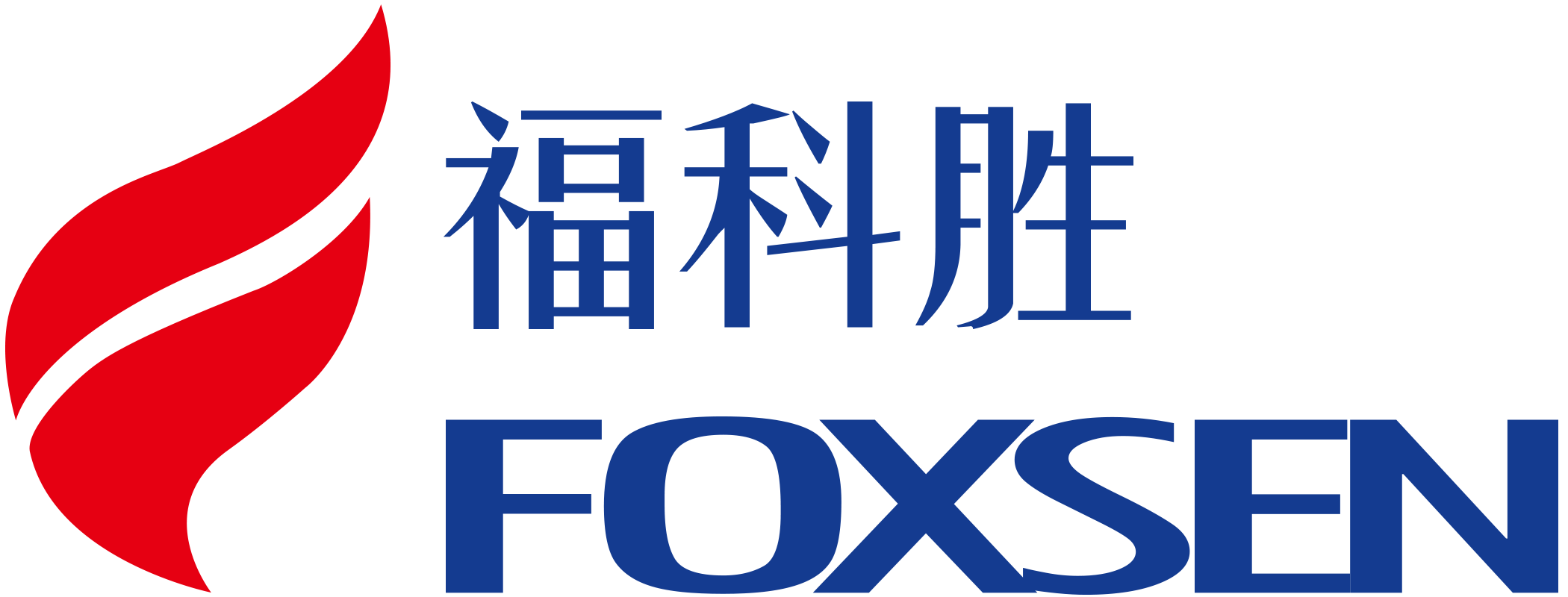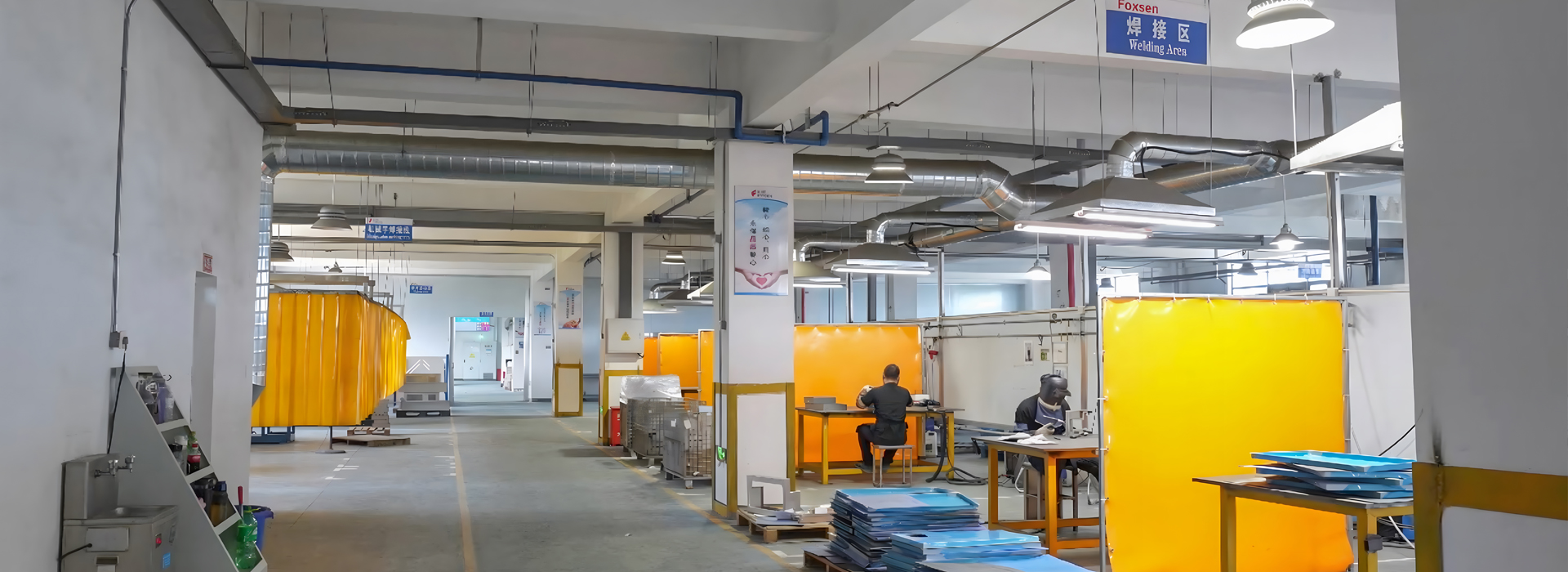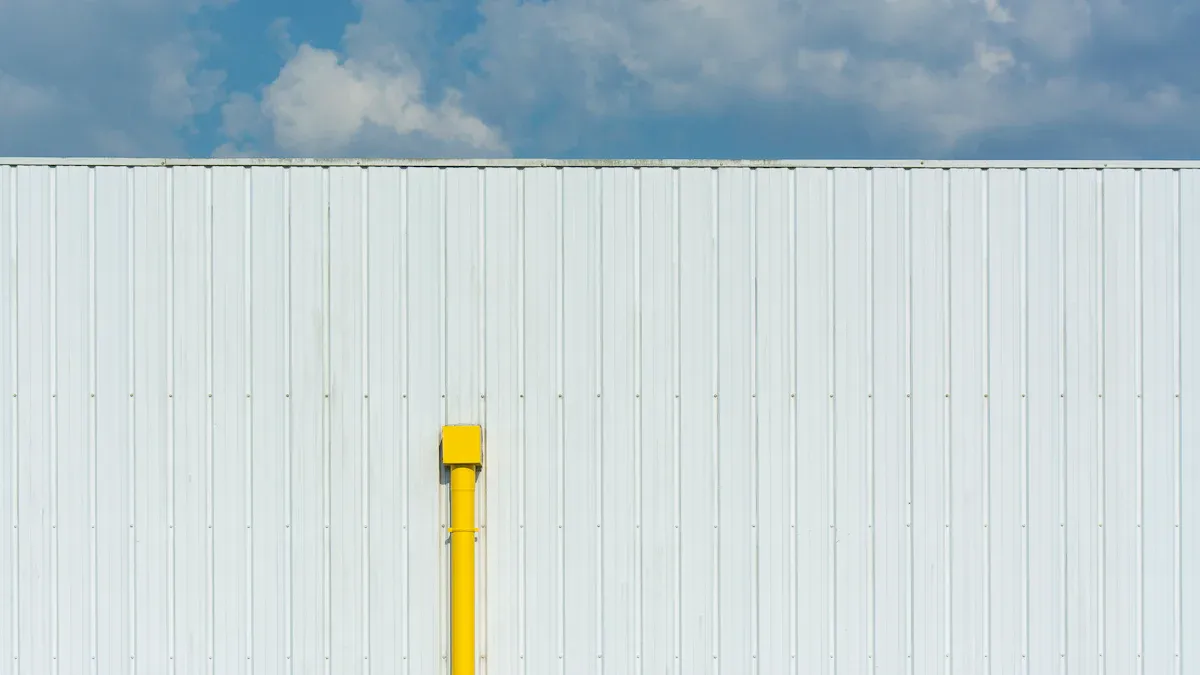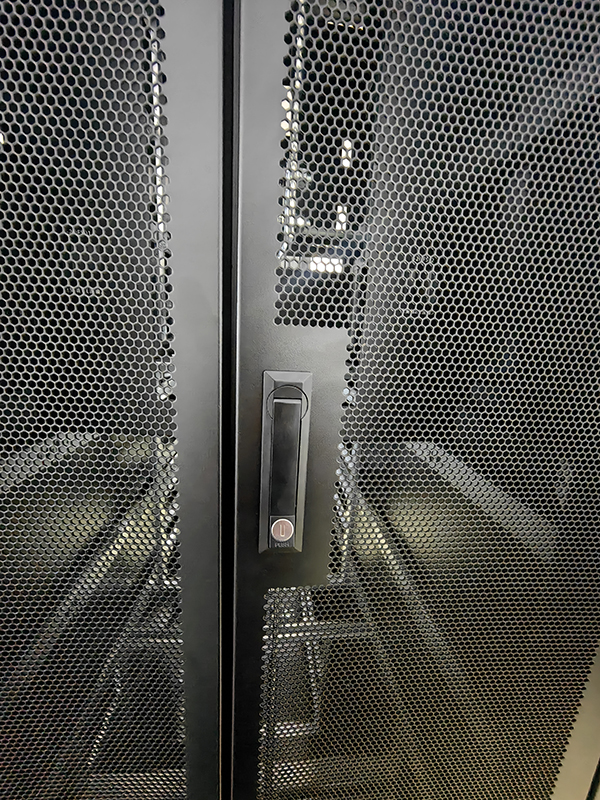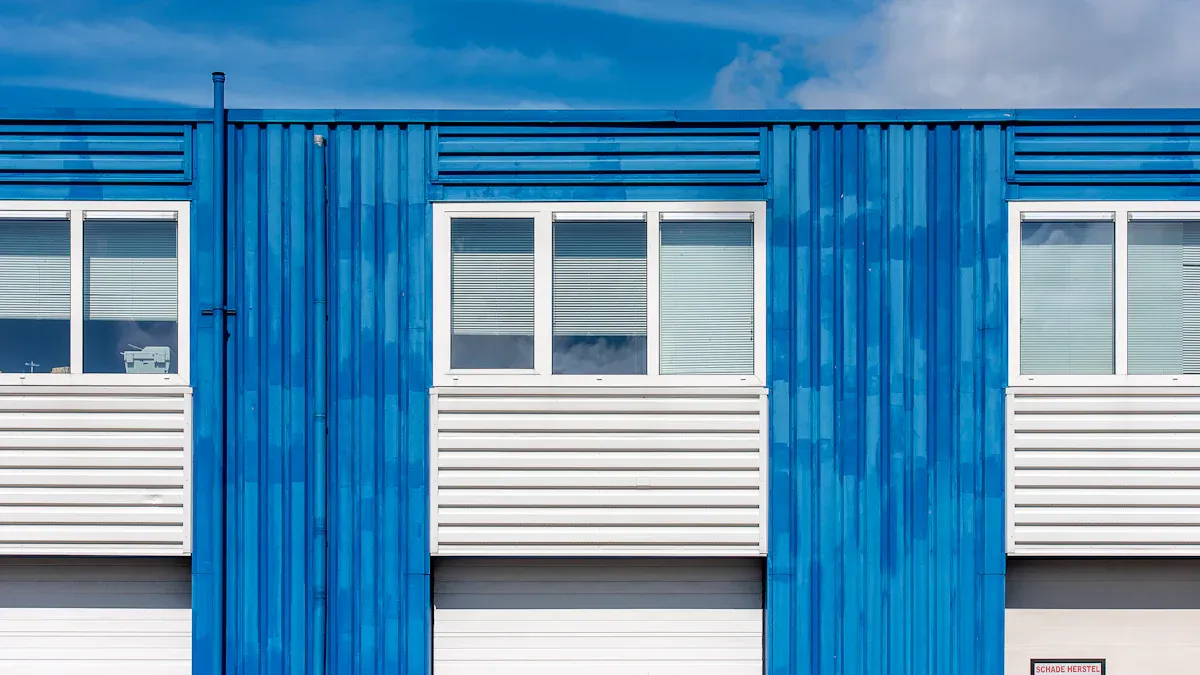When it comes to selecting the perfect sheet metal display enclosure, it’s all about understanding what works best for you. Whether you’re showcasing electronics, housing equipment, or creating a sleek display, the right enclosure can make all the difference. It protects your components, enhances functionality, and adds a professional touch.
Did you know the material you choose can even influence temperature control? For example, studies show that incorporating special materials can reduce indoor peak temperatures by up to 4.3 °C and cut costs significantly. This highlights how a well-chosen enclosure isn’t just about looks—it’s about performance too.
By focusing on your needs and the environment where the enclosure will be used, you’ll ensure long-lasting results and a polished finish.
Key Takeaways
Think about what you need the enclosure for. Is it for safety, keeping things organized, or showing items?
Pick the right material based on strength, price, and weather. Steel is tough, and aluminum is light and doesn’t rust.
Make sure the design works well. Check the size and shape so air can flow and repairs are easy.
Customizing helps with use and looks. Add things like cable holders or special finishes to fit your needs.
Check how it handles the environment. Make sure it can resist dust, water, and temperature changes.
Identifying Your Needs
Functionality and Purpose
Before choosing a sheet metal display enclosure, think about what you need it to do. Is it meant to protect sensitive electronics, organize cables, or showcase a product? Each purpose demands specific features. For example, if you're housing equipment for a trade show, the enclosure's design can directly impact operational efficiency. Studies have shown that events held in enclosures with poor functionality often experience lower efficiency levels. A well-designed enclosure can streamline operations, making your setup easier to manage and more effective.
Rackmount designs are a popular choice for organizing equipment. They offer a clean, professional look while keeping everything secure. If you're considering a rackmount enclosure, look for one with adjustable shelves or cable management options. These features enhance usability and ensure your equipment stays in top condition.
Environmental Factors
Where will your enclosure be used? The environment plays a huge role in determining the right material and design. Outdoor enclosures need to withstand weather conditions like rain, heat, or snow. Indoor ones might require features like ventilation to prevent overheating.
Environmental studies have highlighted the importance of energy and material efficiency in sheet metal forming processes. For instance:
Energy demands and environmental impacts increase as production numbers rise, making material choice crucial for long-term performance.
Sustainability throughout the product life cycle is key, especially for enclosures used in industrial settings.
If you're planning to use the enclosure in a high-humidity area, consider materials with protective coatings to prevent rust. For hot environments, ventilation or cooling systems can help maintain optimal temperatures inside the enclosure.
Aesthetic Considerations
Looks matter, especially if your enclosure will be visible to customers or clients. A sleek, polished design can elevate your brand image. Research shows that aesthetic appeal often outweighs performance or price in product evaluations. People tend to judge products based on their appearance, even if the features are top-notch.
Interestingly, studies have found that consumers sometimes hesitate to use aesthetically enhanced products because they don't want to damage something beautiful. On the flip side, unique designs with slight imperfections can add character and value.
When choosing a sheet metal display enclosure, consider finishes like glossy or matte coatings. These can make your enclosure stand out while aligning with your brand's personality. If you're targeting a modern look, opt for clean lines and minimalistic designs.
Material Selection for Sheet Metal Enclosures
Choosing the right material for your sheet metal display enclosure is a critical step. The material you select impacts everything from durability to cost and even environmental performance. Let’s break it down so you can make an informed decision.
Common Materials and Their Benefits
Not all materials are created equal, and each one brings unique advantages to the table. Here’s a quick comparison to help you understand the strengths and considerations of popular options:
If you’re looking for a balance between strength and affordability, steel might be your go-to. For lightweight applications, aluminum is a solid choice. Stainless steel works best in environments where corrosion resistance is a priority.
Balancing Cost, Weight, and Durability
When it comes to material selection, you’ll need to weigh cost, weight, and durability. Each factor plays a role in determining the best fit for your enclosure.
Cost: Materials like aluminum, stainless steel, and copper tend to be more expensive. However, they offer superior performance in terms of durability and corrosion resistance. On the other hand, mild steel and galvanized steel are more budget-friendly and work well for less demanding applications.
Weight: If portability is a concern, lightweight materials like aluminum are ideal. They’re easy to transport and install, making them perfect for rackmount enclosures used in trade shows or temporary setups.
Durability: For industrial or outdoor environments, durability is key. Stainless steel and galvanized steel provide excellent resistance to wear and tear, ensuring your enclosure lasts longer.
Ultimately, your choice will depend on your specific needs. Are you prioritizing cost savings, or do you need a material that can withstand harsh conditions? Answering these questions will guide you toward the right decision.
Environmental Suitability
The environment where your enclosure will be used also influences material selection. Different materials perform better under certain conditions, so it’s essential to consider factors like temperature, humidity, and exposure to elements.
For example, stainless steel excels in high-humidity areas due to its corrosion resistance. Aluminum is a great option for outdoor use because it resists rust and remains lightweight. On the other hand, copper, while highly conductive, may not be the best choice for environments prone to rust.
Research has shown that eco-design strategies can significantly reduce the environmental impact of enclosures. Studies like those by Hischier et al. (2020) and Mandolini et al. (2019) emphasize the importance of energy efficiency and sustainable materials. By choosing the right material, you not only enhance the performance of your enclosure but also contribute to a greener future.
By considering these factors, you can ensure your sheet metal enclosure is not only functional but also environmentally responsible.
Design Considerations for Your Enclosure
Dimensions and Layout
Getting the dimensions and layout right is one of the most important design tips for your sheet metal display enclosure. A well-planned layout ensures everything fits perfectly and operates efficiently. Start by measuring the components you plan to house. Leave enough space for cables, connectors, and airflow. Proper sizing prevents overheating and keeps your equipment running smoothly.
When designing for precision, engineering tolerances play a big role. Tolerances define how much variation is acceptable in dimensions. For example:
Add 0.2–0.3mm to the diameter of circular holes for clearance.
For better accuracy, drill holes after manufacturing.
Add 1mm to each side of port clearance holes to ensure secure fitting.
These small adjustments can make a big difference in functionality and ease of use.
Assembly and Maintenance
An enclosure that’s easy to assemble and maintain saves you time and money. Think about how often you’ll need to access the components inside. Designs with removable panels or hinged doors make maintenance a breeze.
The layout also affects maintenance efficiency. Components should be arranged to allow easy access without disrupting other parts. For example, placing frequently serviced items near the front can reduce downtime.
Here’s a quick look at how different enclosure systems compare in terms of cost and maintenance:
Choosing a design that balances initial cost with long-term maintenance efficiency is key.
Ventilation and Cooling
Ventilation and cooling are critical for protecting your equipment. Without proper airflow, internal components can overheat, leading to reduced performance or even damage.
You can choose between passive cooling (like natural airflow) or active cooling (like fans or liquid systems). Passive cooling works well for smaller enclosures, while active solutions are better for high-performance setups.
Thermal performance studies show that improving ventilation can significantly enhance efficiency. For example, adding vents or fans can prevent overheating and extend the life of your equipment. If you’re unsure about the best cooling method, consider using 3D simulation software to model thermal characteristics.
By focusing on these design considerations, you’ll create an enclosure that’s functional, durable, and easy to maintain.
Durability and Protection in Sheet Metal Enclosures
When choosing a sheet metal enclosure, durability and protection are key factors to consider. A durable enclosure not only safeguards your equipment but also reduces maintenance costs and extends the lifespan of your components. Let’s explore how you can ensure your enclosure offers a high level of protection.
Resistance to Wear and Tear
Sheet metal enclosures are designed to withstand tough conditions. They act as barriers against dust, water, and extreme temperatures, which helps protect electrical components and prevent premature failure. This durability is especially important for in-field actuators, where reliability is critical.
Advanced fabrication techniques make these enclosures suitable for demanding environments like industrial facilities or outdoor locations. For example, galvanized steel is a popular material due to its exceptional corrosion resistance. Its zinc coating protects against rust, making it ideal for harsh conditions. In fact, galvanized steel enclosures can last over 50 years in rural areas and 20–25 years in urban or coastal environments. This longevity makes them a cost-effective choice for industries that need durable solutions.
Protective Coatings and Finishes
The right coating or finish can significantly enhance the protection of your enclosure. Coatings shield the surface from corrosion, scratches, and other damage, ensuring your enclosure stays in top condition.
A study on heritage metals found that coating thickness and drying time play a crucial role in performance. It highlighted that optimal drying times vary depending on the coating type, and accurate thickness measurements are essential for comparing materials effectively.
For outdoor applications, powder coatings or anodized finishes are excellent options. These finishes not only improve durability but also add a polished look to your enclosure. By investing in protective coatings, you can ensure your enclosure remains functional and visually appealing for years.
Environmental Ratings
Environmental ratings help you determine whether an enclosure is suitable for specific conditions. These ratings indicate the level of protection against dust, water, and other environmental factors.
Consider the environment where the enclosure will be used.
Ensure it complies with industry standards for safety and durability.
Choose materials, coatings, and sealing methods that match the required protection level.
For example, enclosures with high IP ratings are ideal for outdoor or industrial use, as they offer superior protection against water and dust. By selecting the right environmental rating, you can ensure your enclosure performs reliably in any setting.
Durability and protection are essential for any sheet metal enclosure. By focusing on wear resistance, protective finishes, and environmental ratings, you can create a solution that protects your equipment and stands the test of time.
Customization Options for Sheet Metal Display Enclosures
When it comes to sheet metal enclosures, customization is where functionality meets creativity. Whether you’re looking to enhance branding, add unique features, or tailor the design to specific needs, customization ensures your enclosure stands out while meeting all your requirements.
Surface Finishes and Branding
The finish of your enclosure isn’t just about looks—it’s about making a statement. A polished surface can elevate your brand image, while a matte finish might convey sophistication. Studies show that consumers often associate glossy finishes with premium products, while matte finishes are preferred for understated elegance.
If branding is a priority, consider adding logos or custom designs to the enclosure. Techniques like laser engraving or silk-screen printing can make your enclosure visually striking. These options not only enhance aesthetics but also reinforce your brand identity.
Additional Features and Modifications
Sometimes, standard enclosures just don’t cut it. Adding features like cable management systems, PCB mounting brackets, or specialized ventilation can make your enclosure more functional. For example, if you’re housing sensitive electronics, you might need extra cooling systems to prevent overheating.
The sheet metal fabrication market is evolving rapidly, driven by advancements in manufacturing technologies. Here’s what’s trending:
The rise of automation and robotics is enabling faster production of complex, custom components.
Demand for fully custom enclosures is growing steadily, with an expected CAGR of 4–6% over the next seven years.
These trends mean you can now incorporate intricate modifications without breaking the bank. Whether it’s adding locking mechanisms for security or designing enclosures with modular components, the possibilities are endless.
Tailored Solutions for Specific Needs
Sometimes, you need more than just a custom enclosure—you need a solution tailored to your unique challenges. Companies like Hudson Technologies and WireCrafters have demonstrated the power of tailored designs. Hudson created a stainless steel enclosure for Ambri, designed to withstand extreme heat and corrosive chemicals. WireCrafters collaborated with Echelon 1 Solutions to develop secure storage for the U.S. Air Force, addressing the military’s specific operational demands.
These examples show how tailored solutions can meet even the most demanding requirements. If you’re working in a specialized industry, like energy or defense, investing in a fully custom enclosure can save time and ensure reliability.
Customization isn’t just about adding features—it’s about creating an enclosure that works for you. Whether it’s branding, modifications, or tailored designs, Foxsen’s sheet metal enclosures offer the flexibility you need to bring your vision to life.
Common Styles of Sheet Metal Enclosures
When it comes to choosing the right enclosure style, you’ve got plenty of options. Each style serves a unique purpose, so understanding their features can help you pick the best one for your needs. Let’s explore the most common enclosure styles.
Wall-Mounted Options
Wall-mounted enclosures are perfect for saving space. You can mount them directly onto walls, keeping your equipment off the floor and out of the way. These enclosures work well for applications like housing PCB boards or organizing cables in tight spaces.
One of the biggest advantages of wall-mounted sheet metal enclosures is their accessibility. They’re easy to reach, making maintenance and adjustments a breeze. Plus, they’re ideal for environments where floor space is limited, like small offices or workshops.
If you’re looking for a sleek and professional look, wall-mounted enclosures often come with clean lines and compact designs. They’re also great for protecting sensitive equipment from accidental bumps or spills.
Freestanding Designs
Freestanding enclosures offer flexibility and durability. These designs are built to stand on their own, making them ideal for larger setups or industrial environments. You’ll often find freestanding rackmount enclosures in server rooms or manufacturing facilities.
The beauty of freestanding designs lies in their capacity. They can house multiple PCB boards, heavy equipment, or even entire systems. Many come with adjustable shelves, so you can customize the layout to fit your needs.
Freestanding sheet metal enclosures are also known for their stability. Their sturdy construction ensures they stay in place, even in high-traffic areas. If you need an enclosure that can handle heavy-duty applications, this style is a solid choice.
Portable and Modular Solutions
Portable and modular enclosures combine mobility with adaptability. These styles are perfect for applications that require frequent movement or reconfiguration. Whether you’re setting up a temporary display or need a solution for maintenance tasks, portable enclosures have you covered.
Here’s what makes portable and modular sheet metal enclosures stand out:
Lightweight construction makes these enclosures easy to transport, while heavy-duty wheels ensure smooth mobility in industrial settings. They’re ideal for rackmount setups that require regular maintenance or repair.
Portable enclosures also shine in environments where flexibility is key. You can reconfigure them to fit changing needs, making them a smart investment for dynamic workplaces.
By understanding these enclosure styles, you’ll be better equipped to choose the one that fits your requirements. Whether you need a wall-mounted option for tight spaces, a freestanding design for heavy equipment, or a portable solution for mobility, there’s a style that’s perfect for you.
Choosing the right sheet metal display enclosure doesn’t have to be overwhelming. By focusing on your specific needs—like functionality, durability, and design—you can find an enclosure that checks all the boxes. Whether you’re prioritizing cost, environmental resistance, or ease of assembly, the right choice ensures your equipment stays protected and performs reliably.
Remember, a custom enclosure can go a long way in meeting unique requirements. Experts recommend designs that simplify maintenance, ensure proper airflow, and balance performance with manufacturing efficiency. If you’re unsure where to start, consulting a supplier or industry professional can help you navigate options like aluminum for lightweight durability or stainless steel for harsh conditions.
Ultimately, the best enclosure is one that fits your application perfectly while standing up to environmental challenges. Take the time to evaluate your options, and you’ll end up with a solution that’s both practical and long-lasting.
FAQ
What is the best material for outdoor sheet metal enclosures?
Aluminum and stainless steel are great choices. Aluminum resists rust and stays lightweight, while stainless steel offers superior corrosion resistance. Both materials handle harsh weather well, making them ideal for outdoor use.
Tip: For coastal areas, stainless steel is your best bet due to its durability against salty air.
How do I ensure proper ventilation in my enclosure?
Add vents or fans to improve airflow. Passive cooling works for smaller setups, while active cooling (like fans) suits high-performance systems. Proper ventilation prevents overheating and extends equipment life.
Note: Use 3D simulation software to test airflow before finalizing your design.
Can I customize my enclosure for branding?
Absolutely! You can add logos, engravings, or custom finishes to match your brand’s style. Techniques like laser engraving or silk-screen printing make your enclosure visually appealing and professional.
Emoji: ✨ Custom branding adds a polished touch to your enclosure!
Are modular enclosures worth it?
Yes, modular enclosures offer flexibility. You can reconfigure them to fit changing needs, making them perfect for dynamic workplaces. They’re also portable, so you can move them easily when needed.
Tip: Modular designs save time and adapt to future requirements.
How do I choose the right size for my enclosure?
Measure your components and leave extra space for cables and airflow. Proper sizing prevents overheating and ensures everything fits securely.
